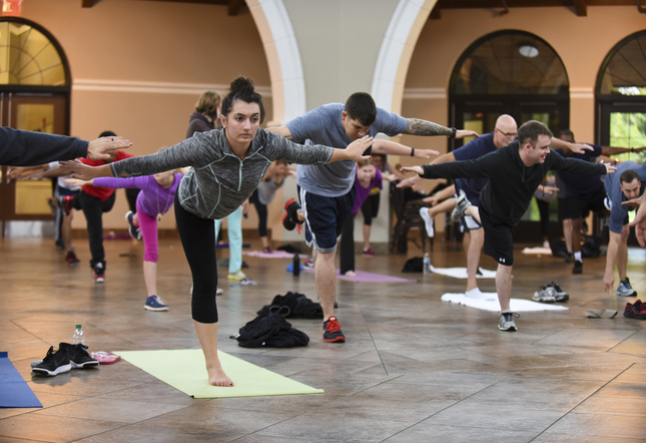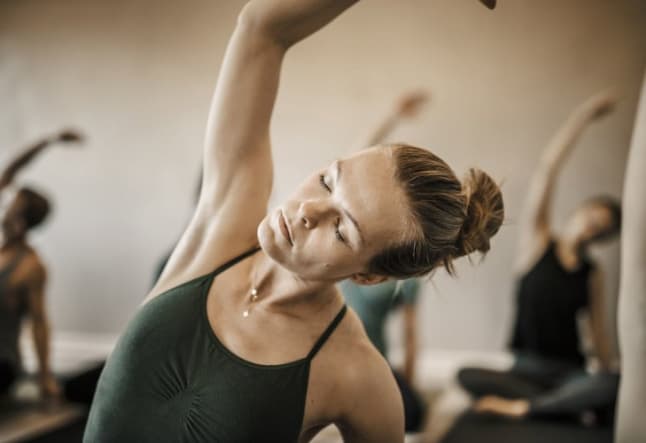how yoga can help with ptsd

studies are revealing the effectiveness of yoga therapy in the treatment of PTSD
Post Traumatic Stress Disorder (PTSD) is a distressing, and sometimes incapacitating mental health condition. It affects approximately 8 percent of all adults in the US during their lifetime, and a large survey in England found that 3 in 100 adults are currently suffering with the health condition.
Like a number of mental health conditions, PTSD has also suffered from its fair share of negativity in the past, with symptoms dismissed and even thought of as a sign of cowardice. Luckily we have become more enlightened in the modern era, and focused our efforts on helping those living with PTSD – through medication, counselling and increasingly through yoga therapy.
The use of yoga therapy and meditation techniques in the treatment of PTSD point to our greater understanding of the connection between the mind and body, and a growing coherence between these ancient techniques and modern scientific research. By making yoga therapy part of an individual’s recovery, we are acknowledging the benefits of a variety of treatments, offering people more than the traditional “one-size-fits all” approach.
What is Post Traumatic Stress Disorder?
PTSD is a mental health condition that some people develop after they experience a traumatic event. It is characterized by flashbacks, nightmares, high anxiety and feelings of helplessness. It is most associated in the public consciousness with the military, where soldiers return home to find their lives dominated by these symptoms. But it isn’t exclusive to combat, and any traumatizing event can trigger PTSD, such as giving birth, a car accident or assault, and while it’s not quite clear what makes some people develop PTSD after trauma, it is in no way a sign of weakness.
PTSD has been demonstrated through neuroimaging studies to have a significant effect on the brain. Increased reactivity in the amygdala (the “fear center” of the brain) demonstrates that the nervous system of those living with PTSD has become significantly dysregulated. Sufferers are in constant high-alert, with their bodies behaving as if there is a real and present danger that they must prepare for. This creates a perpetual state of stress, followed by panic.
The flashbacks that characterise PTSD are connected to smaller hippocampal volume, an area of the brain which governs memory and helps us distinguish between past and present. While the fear centers of the brain fires indiscriminately, the higher functions such as memory function less well, making it more difficult for sufferers to form new memories or to think rationally. They lose the ability to discriminate between past and present experiences, or correctly interpret environmental contexts, with their fear response flaring in completely benign situations.
dddd.jpg)
Traditional treatments
There are two traditional approaches to treating PTSD, which are usually used alongside medication such as anti-depressants. Cognitive Processing Therapy (CPT) is a talking therapy where patients talk through their traumatic experiences, and process the memories and any associated feelings with a therapist. Alternatively, there is Prolonged Exposure (PE), where people relive the experience in a safe environment until the memories are no longer so powerful and life-changing.
Both of these methods can help people greatly, but according to the American Medical Association, around two thirds of people receiving CPT or PE therapy were still suffering from PTSD at the end of their treatment. It may be that with complex mental health issues such as this, it will a long time before we hit upon a true “cure”, but complementary support may well help some people manage their symptoms or even overcome this condition.
The benefits of yoga therapy
For people struggling with PTSD, yoga therapy offers support in a variety of ways. Firstly and most simply, yoga therapy creates a calming and supportive environment. There’s a sense of community cultivated in a trauma-sensitive yoga class that can help people feel less alone, and give them a safe space in which to recover.
There’s also research to suggest that yoga has resulted in positive outcomes for people suffering from PTSD. One from the Journal of Traumatic Stress found that a group of service veterans who practised yoga demonstrated reduced PTSD symptoms, breathed more slowly and were less anxious than the control group.
Another at the University of Toronto took 80 individuals living with PTSD and put them on an eight week yoga program, discovering that the participants experienced reduced symptoms of PTSD, slept better, were less stressed, less anxious and more resilient than the control group.
While there needs to be more research, these results chime with anecdotal reports and other scientific studies conducted on yoga. Yoga brings our bodies back into a state of balance, helping to restore the disconnect between the mind and body; and with this comes the potential to support those with post traumatic stress disorder throughout their healing process. Ultimately yoga therapy offers an alternative, non-invasive approach that people can use for the rest of their lives.
You might also like to read about how yoga can help you to improve your mental and emotional health.



